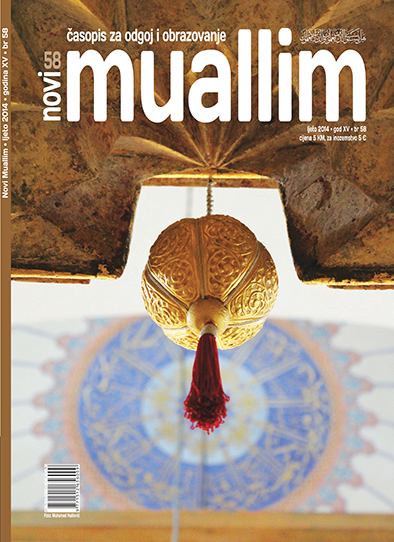HOW MADRASSAS WERE DESTROYED, BUT ALSO HOW WAS ONE EXCEPTIONALLY SIGNIFICANT WAQF IN BIHAĆ PRESERVED
DOI:
https://doi.org/10.26340/muallim.v15i58.244Keywords:
waqf, Bihać, madrassa, Sadik ef. RibićAbstract
UDK 373.5.014.521: 28](497.6 Bihać)
In Muslim jurisprudence the institution of waqf is a public good categorised as a permanent asset. The institution of waqf in BiH exists since the arrival of the Ottomans. The Ottoman state kept a good record of all the waqfs and made sure that these were organised in accordance to the shariah – legal requirements. With the arrival of Austro – Hungarian government waqfs were left on their own. Inadequate care and a lack of supervision and control paved the way for manipulations that culminated in devastation and total destruction of waqfs. Thus numerous buildings were devastated and many have been used for other purposes. This was going on not only during the Austro – Hungarian rule, but also during the Kingdom of Serbs, Croats and Slovenians when so called Land Reform Law was imposed, as well as at the time of the Socialist Yugoslavia and its so called expropriation laws. The same fate had waqfs in Bosanska Krajina and the madrassas of Bihać are lost without the trace. In this article the author thoroughly researches and with relevant arguments presents the history and circumstances of the loss of a very significant waqf – madrassa in Bihać and the history of preservation of the waqf land on the territory of this municipality. Main research was based upon extensive private archive of Sadik Ribić and contracts and other documents and court verdicts that allowed the extinction of waqfs during the Socialist Yugoslavia. The methods used in this research were: historical, comparative and the method of textual analysis.
Downloads
Published
How to Cite
Issue
Section
License
Naknada:
a. Časopis ne naplaćuje naknadu za obradu članaka (APC) i naknadu za podnošenje članaka.
Autori koji objavljuju u ovom časopisu pristaju na sljedeće uvijete:
- Autori zadržavaju autorska prava i pružaju časopisu pravo prvog objavljivanja, pri čemu će rad jednu godinu po objavljivanju biti podložan licenci Creative Commons imenovanje koja omogućuje drugima da dijele rad uz uvijet navođenja autorstva i izvornog objavljivanja u ovom časopisu.
- Autori mogu izraditi zasebne, ugovorne aranžmane za ne-ekskluzivnu distribuciju rada objavljenog u časopisu (npr. postavljanje u institucionalni repozitorij ili objavljivanje u knjizi), uz navođenje da je rad izvorno objavljen u ovom časopisu.


